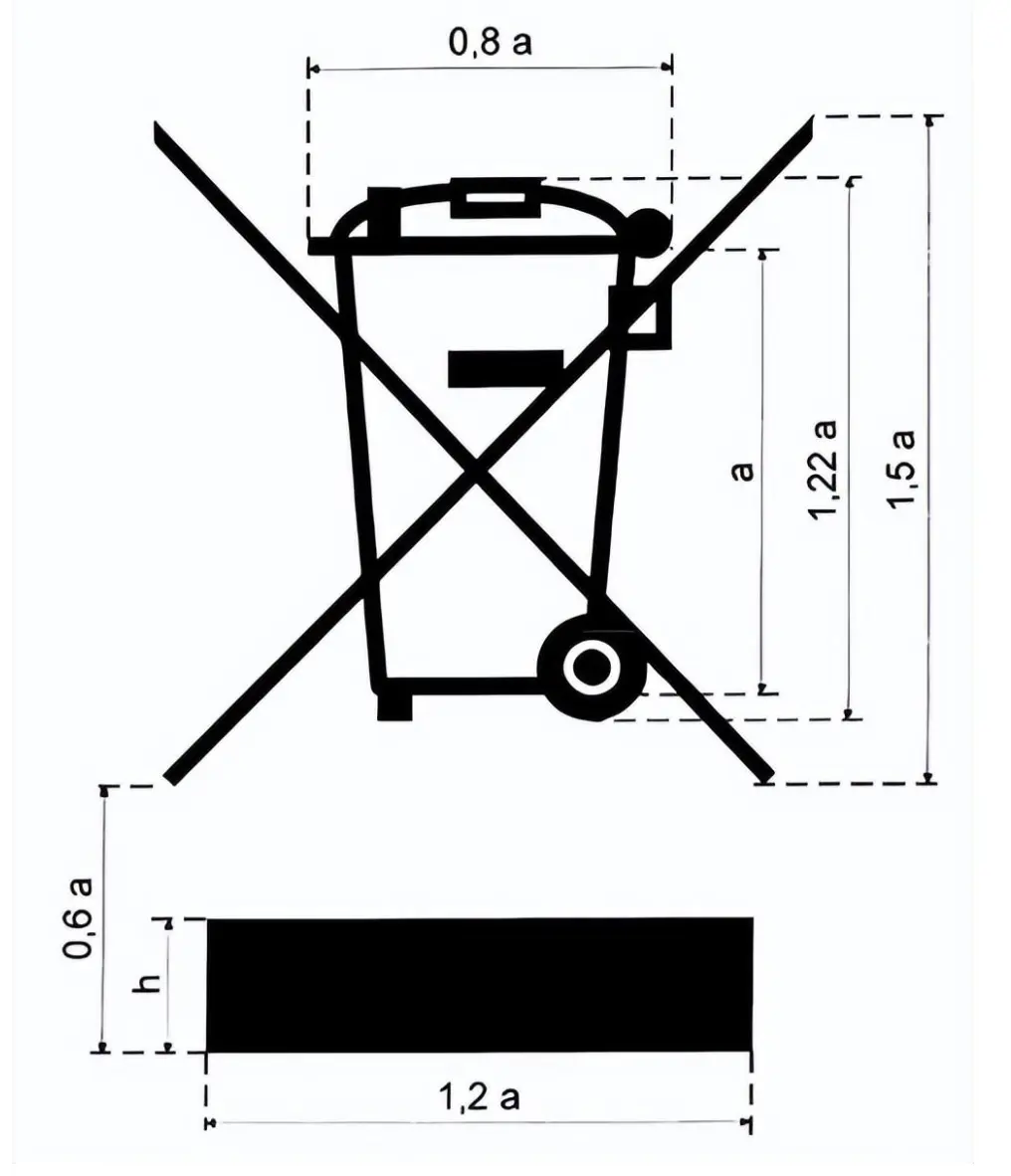
How to Get a WEEE Report?
What is German WEEE?
The European Committee for Electrotechnical Standardization (CENELEC) has announced the latest version of the EN 50419:2022 document. This document stipULates the marking requirements for electrical and electronic equipment (EEE) to minimize the disposal of old EEE as unsorted waste and promote their separate collection. EN 50419:2022 was published on December 6, 2022, and officially issued as a standard on June 6, 2023. The old version (EN 50419:2006) will be withdrawn on June 6, 2025.
WEEE stands for Waste of Electrical and Electronic Equipment. It is a directive in Europe that governs the recycling requirements for discarded electronic and electrical devices, aiming to promote a circular economy and improve resource efficiency.
EU laws mandate platforms like Amazon, AliExpress, and eBay to ensure that foreign e-commerce sellers register their electronic devices for recycling if selling within the EU.
Definition of Manufacturers:
If you sell goods in Germany and your company is not located within the country, you are consideRED the manufacturer of the electronic and electrical equipment delivered to Germany. This applies even if the goods bear the brand of a registered manufacturer with the EAR Foundation.
Consequences of Not Registering with WEEE:
1. Platform delisting.
2. Customs detention and destruction of goods.
3. Legal disputes due to competitor reports.
4. Fines up to €100,000 or up to two years of imprisonment by regulatory authorities.
Products That Must Display weee markings
1. Category 1: Heat exchangers
Examples: Refrigerators, freezers, air conditioners, heat pumps, dehumidifiers with integrated circuits using substances other than water.
2. Category 2: Displays
Examples: TVs, computers, digital photo frames, and any screens with a surface area exceeding 100 cm².
3. Category 3: Lighting equipment
Examples: Tubular fluorescent lamps, discharge bulbs, and other lighting facility components.
4. Category 4: Large appliances
Examples: Washing machines, ovens, copiers, electric stoves, medical devices, and any appliance with external dimensions exceeding 50 cm.
5. Category 5: Small appliances
Examples: MICrowaves, scales, watches, irons, cameras, and any appliance with external dimensions smaller than 50 cm.
6. Category 6: Small communication devices
Examples: Mobile phones, routers, card readers, scanners, and IT and communication equipment for storing and processing data.
How to Ensure German weee compliance
1. Accurate Form Submission:
Include company details, and the type and quantity of electronic products sold.
2. Provide Complete Supporting Documentation:
Documentation includes the German weee registration certificate, invoices, and shipping documents.
3. Timely Information Updates:
Update sales information promptly to ensure the authorities are aware of any changes.
4. Adherence to Laws and Regulations:
Avoid submitting false or incomplete information to prevent legal issues and fines.
Compliance with German WEEE registration is an important obligation for all companies selling electronic equipment in Germany.
Documents Required for WEEE Registration
- Compliance information form (completed by a representative).
- Product images and manuals featuring logos.
- Scanned business license.
WEEE Compliance Requirements
- Directive 97/7/EC issued by the European Parliament on May 20, 1997.
- Registration with the EAR (Elektro-Altgeräte Register) to obtain a unique WEEE number. Sellers must display this WEEE number on platforms and products.
- Monthly market volume declarations and fulfillment of recycling obligations through service providers.
- Registration must be completed before shipping (large appliances like refrigerators or washing machines must also display energy consumption labels).
Producers or Authorized Representatives Are Obligated To:
1. Design products that can be easily disassembled.
2. Regularly report monthly and annual sales and recycling data to German WEEE authorities.
3. Fulfill collection and recycling requirements.
4. Appoint authorized representatives if they lack a German subsidiary.
5. Provide bankruptcy protection guarantees for B2C products.
6. Ensure retailers with over 400 m² of sales or storage space for electronic equipment collect WEEE from consumers.
Recycling Services Obligations:
Online sellers must provide waste recycling services for old electronic devices:
- Small devices (less than 25 cm): Must accept returns from any customer, even if the device was not purchased from the seller (0:1 collection).
- Other devices: Must accept returns when a customer buys a similar new device (1:1 collection).
Sellers must register their recycling system with the EAR Foundation and report annual recycling and disposal data.
WEEE Product Marking Requirements
Products must display the weee logo, a crossed-out wheeled bin, per EN 50419 standards.

- Minimum height: 7 mm.
- Marking must be clear, visible, and indelible.
- A black horizontal bar under the bin must also be displayed with a minimum height of 1 mm.
Amazon’s German WEEE Compliance Requirements:
From January 1, 2023, all EEE products must provide WEEE-Reg.-Nr.DE as proof of compliance.
German WEEE Authorized Representative Requirements:
Since October 24, 2015, producers without German subsidiaries must designate an authorized representative in Germany to register with the EAR Foundation.
How to Verify Your Product Registration:
Check your status on the WEEE website:
(https://www.ear-system.de/ear-verzeichnis/hersteller#no-back)
Additional Notes:
1. WEEE registrations are valid for a calendar year. Regardless of when you register, the full annual fee applies, expiring on December 31. Sellers must renew certificates for the following year.
2. Registration involves pre-declarations and annual reports. Delays can result in fines or product delisting.
Email:hello@jjrlab.com
Write your message here and send it to us
 What Are the Testing Items of California Propositi
What Are the Testing Items of California Propositi
 E-Cigarette EU TPD Testing
E-Cigarette EU TPD Testing
 Testing Certification for E-cigarettes Exported to
Testing Certification for E-cigarettes Exported to
 What is Amazon US CPC Certification?
What is Amazon US CPC Certification?
 UK Toy Safety Regulation Standard EN 71-13
UK Toy Safety Regulation Standard EN 71-13
 What is EU UFI Registration?
What is EU UFI Registration?
 EU UFI Registration for E-cigarette E-liquid
EU UFI Registration for E-cigarette E-liquid
 How to get the MSDS Report for Electronic Cigarett
How to get the MSDS Report for Electronic Cigarett
Leave us a message
24-hour online customer service at any time to respond, so that you worry!




